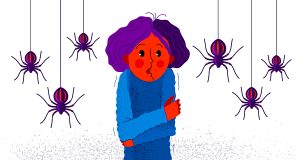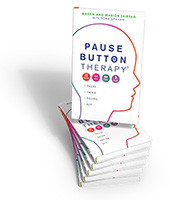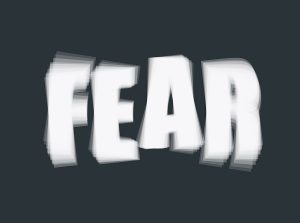Treatment for Phobias
Phobias – put your mind at rest…
Everyone has fears to some extent. Some people are afraid of public speaking, for example, or feel uncomfortable in the company of people they don’t know. For others, the sight of blood scares them so much they become light-headed, and may even pass out. However, most people are able to control their fears and go about their normal activities. When fears and phobias take up excessive time and significantly interfere with daily life and relationships, it is time to seek help. Left untreated, phobias can lead to social isolation and depression.
When does a fear become a phobia?
Fears become a reason for concern when they are persistent and interfere with your daily functioning. When a fear reaches this level of intensity, it is often identified as a phobia.
A phobia is an irrational fear, one that gets in the way of daily living, such as fear of waiting in a queue at the supermarket, attending a social event, going on a bus or getting in a lift, or even going to the dentist. If you have a phobia, you avoid the source of your irrational fear wherever possible.
Rational fears, on the other hand, are those that evolved for the survival of the species and serve as self-protection mechanisms. When rational fear is activated, your body and mind become alert to the dangers in your immediate reality and respond accordingly. Fear of snakes, poisonous spiders, fire, and falling are examples of rational fears and are based on your instinctive self-defense responses.
In-case you are interested, at the bottom of this page we have included an article by John Misachi listing the top ten Phobias in the world, take a look you may be surprised.

What sort of treatment is available to help people overcome phobias?
Even though a person might realise that his or her fears are excessive and irrational, changing that fear is not a simple matter of understanding it. Most phobics require assistance from a qualified therapist to overcome their reactions to the object or situation they fear. In some extreme cases, therapy may also be combined with medications, to reduce the severity of reactions.
- Cognitive Behaviour Therapy (CBT): This is generally viewed as the most effective form of therapy for treating phobias. CBT involves the use of such techniques as thought-stopping, gradual challenging of irrational behaviours, tracking and monitoring thoughts, feelings, and actions, etc.
- Relaxation Exercises: A person with a phobia is very anxious and tense when thinking about the object of their fear. Learning to relax helps you encounter the feared object or situation in a calmer state. Deep breathing, muscle relaxation, meditation and positive affirmations are all included in the hypnosis part of the Elite therapy to help reduce symptoms.
- Medications: If phobia symptoms are extremely problematic, or if a person needs some temporary assistance until behavioural changes take effect, certain anti-depressants or anti-anxiety medications may be prescribed. At Elite we are not medically trained ourselves, but we always advise prospective clients to consult their GP first before starting on a course of therapy. We often find that clients have already sought help from their doctor and they are already taking some prescription drugs for their problem. It is often the case, however, that medication alone is not the most satisfactory course of treatment for phobias; a course of Cognitive Behaviour Therapy sessions combined with relaxation techniques consistently provides the most effective treatment.
At the Elite Clinic we have been helping people to overcome a long list of Phobias over recent years, the therapies we use include the traditional CBT, and also the more advanced T.CBT as developed at the Elite Clinic, we also underpin the treatment as and when necessary with Clinical Hypnotherapy, occasionally incorporating NLP.
 Phobia is a type of anxiety disorder in human beings which is characterized by the persistent fear of objects and situations. Approximately 9% to 18% of people in the US are thought to struggle with one or more phobias. For a fear of an object or situation to be considered a phobia, it has to be long-lasting, for six months or more. Victims of phobia usually take caution and sometimes even dangerous measures to avoid contact and experience with their cause of fear. The fear is developed after a horrible experience, either to the victim or somebody else, the fear might be genetic and inborn, or it might develop after a negative experience. Some of the most common phobias are discussed below.
Phobia is a type of anxiety disorder in human beings which is characterized by the persistent fear of objects and situations. Approximately 9% to 18% of people in the US are thought to struggle with one or more phobias. For a fear of an object or situation to be considered a phobia, it has to be long-lasting, for six months or more. Victims of phobia usually take caution and sometimes even dangerous measures to avoid contact and experience with their cause of fear. The fear is developed after a horrible experience, either to the victim or somebody else, the fear might be genetic and inborn, or it might develop after a negative experience. Some of the most common phobias are discussed below.
Click Here to read an article featured in the Guardian entitled “That Sinking Feline”, which lists some famous “cat-phobics” and suggests that Cognitive Behaviour Therapy combined with Hypnotherapy is an extremely effective course of treatment for all sorts of phobias.
During the extended lock-down period Martin and Marion Shirran have invested the time in writing, recording and editing the all new fully downloadable weight loss treatment that is expected to become the industries gold standard treatment visit for more info https://myweighless.com/does-obesity-cause-depression/

As you will read on other pages of this site, at Elite we have been helping people overcome a number of different problems for many years. Whist we continue to offer non-residential treatment at our clinic in Spain, over the years we have invested a considerable amount of both time and finances creating a cutting edge and very successful distance treatment programme, using Medias such as Zoom, Face Time and Skype. Whilst these sessions can be taken individually, we also offer a full ‘Virtual Rehab’ package, providing multiple sessions each day, along with 24/7 support, in effect mirroring the Rehab experience, but from the comfort and security of your own home, and of course at a fraction of the normal costs.
 Contact US. Should you have any additional questions regarding the treatment offered by the clinic do feel free to drop us an email, we will be pleased if requested to call you back for an information conversation –
Contact US. Should you have any additional questions regarding the treatment offered by the clinic do feel free to drop us an email, we will be pleased if requested to call you back for an information conversation –
Tel: 0034 951 311 591. Contact us by email here
 National and International Home Visits – Since the first day of opening the clinic, Martin and Marion have offered their unique range of treatment packages to clients around the world in their own homes, for details, prices please feel free to contact the clinic direct by phone or email.
National and International Home Visits – Since the first day of opening the clinic, Martin and Marion have offered their unique range of treatment packages to clients around the world in their own homes, for details, prices please feel free to contact the clinic direct by phone or email.
Tel: 0034 951 311 591. Contact us by email


Over the last fifteen years, Martin and Marion Shirran, the joint founders of the Elite Clinic have been featured in just about every UK National Newspaper, and in hundreds of magazines, including titles such as Vogue, Marie Claire and Psychologies Magazine. They were flown to New York where their work was the subject of a news special on the Good Morning America TV show. They have also appeared in numerous UK shows. Last year they were interviewed by Holly Willoughby and Philip Schofield on the This Morning TV Show. You can read more in the News Section of this site.
 During 2012, Martin and Marion signed a Multi Title International publishing contract with the renown Hay House Publishing
During 2012, Martin and Marion signed a Multi Title International publishing contract with the renown Hay House Publishing  House in New York. There first two , best selling books are available globally from Amazon. The forward of the Pause Button Therapy book was written by Professor Philip Zimbardo of Stanford University in Dan Fransisco. The books were also endorsed by Professor Windy Dryden of Goldsmiths University London.
House in New York. There first two , best selling books are available globally from Amazon. The forward of the Pause Button Therapy book was written by Professor Philip Zimbardo of Stanford University in Dan Fransisco. The books were also endorsed by Professor Windy Dryden of Goldsmiths University London.
The 10 Most Common Phobias, in reverse order – By John Misachi on January 15 2018 in Society.
- Mysophobia
Mysophobia is the fear of dirt due to contamination by bacteria and germs. The phobia is also referred to as verminophobia, germophobia, bacillophobia, or bacteriophobia. Bacteriophobia and bacillophobia specifically refers to the fear of exposure and contamination to bacteria and microbes in general. Mysophobia is characterized by victims constantly washing their hands. In fact, some of the victims go to an extent of owning a collection of disinfectants reserved for washing their hands.
- Agoraphobia
Agoraphobia is an anxiety disorder whereby the victims perceive certain environments outside their residence as unsafe. They may have fear of going to public places, shopping malls, or open spaces. The victims will always try their best to avoid these places, with some unable to leave their homes. Agoraphobia may be caused by genetic and environmental factors. The victims may fear certain places because someone close to them was hurt or killed while in those places. It has also been known to be hereditary. Agoraphobia can be suppressed by counseling the victims and putting them through Cognitive Behavioral Therapy (CBT).
- Social Phobia

Social phobia is also known as social anxiety disorder. It is characterized by extreme fear and anxiety of being in a social event or situation. Social phobic individuals have traits that exceed normal levels of shyness that people might experience when they are in a social situation. They are extremely afraid to engage in a conversation with a stranger. The affected people are extremely afraid of being the center of attention or afraid of behaving in a way that would be embarrassing and humiliating to them. The victims usually have signs such as Flushing, stammering, excessive sweating, nausea, or trembling when they are in social places. In extreme cases, some victims experience panic attacks.
- Trypanophobia
Trypanophobia is the extreme fear of a medical procedure that involves injections and hypodermic needles. Those who have this phobia go to an extent of avoiding blood tests and medical care even if they are extremely sick for the fear injection. An estimated 10% of American adults suffer from trypanophobia. When about to be injected, the affected people get extremely irritated and experience symptoms like excessive sweating, nausea, high heart beat rate, and in extreme cases the victims might faint. Some of the victims get irritated when they see another person undergoing medical procedures that involve injections.
- Astraphobia
Astraphobia, also known as astrapophobia, brontophobia, keraunophobia, or tonitrophobia, is the fear of lightning and thunder. It is developed by both human beings and other animals. Animals that mostly experience astraphobia are dogs and cats. Even if the threat is minimal, the affected persons will feel very anxious. During the storm, the victims can feel nauseated, cry, tremble, sweat excessively, sudden and urgent need to urinate, and a rapid heartbeat. The fear is usually more intense when the victim is alone. They often cover their ears with their hands and seek for extra shelter during thunderstorm. They may hide under a bed or in a closet to help them suppress the sound and light. They are usually alert to get news and updates on weather forecasting and will rarely go out without checking weather updates. Repeated exposure to lightning and thunder helps to build immunity.
- Cynophobia
Cynophobia is the fear of dogs. The victim may also be freaked out by just looking at the photos of dogs. More females are affected by this phobia than males. In fact, most adults that have cynophobia may have developed it during childhood, especially between the ages of 5 to 9 years. Cynophobia often develops after a victim has a nasty experience with a dog, such as being bitten or chased, or after hearing horrible stories about dogs from other people.
- Aerophobia
Aerophobia is the fear of flying. The victims of aerophobia get anxious and very afraid at the mere thought of being in an airplane or a helicopter. They often try their best to avoid journeys that would involve air travel. In extreme cases, the victims could vomit or get panic attacks at the sight or mention of air travel. They become very irritable and distressed when a planned air travel approaches. Constant air travel helps eliminate aerophobia. Cognitive Behavioral Therapy can also be administered.
- Acrophobia
Acrophobia is the fear of heights. Most with acrophobia get extremely nervous and anxious when they are in an elevated place. Although the place might not be considered very high by other people, to the acrophobic it can still be a source of extreme fear. The fear comes with the thought of falling, and symptoms begin to subside when back on the ground. While in high places, they sweat excessively, experience panic attacks, increased heartbeat, and might even pass out. Antidepressants and ant-anxiety drugs can be administered to help reduce the fear.
- Ophidiophobia
Ophidiophobia is the fear of snakes. The victims get freaked out by the fear of venom or being bitten by snakes. It is the most common phobia reported by most people. In fact, researchers have found out that up to one-third of human beings are ophidiophobic. The victims not only fear live snakes, but also get extremely scared by just watching a snake video or looking at snake pictures. The fear is more common in adults than children. In fact, children have been found to play around with a snake not knowing the dangers they might be exposing themselves to.
- Arachnophobia
Arachnophobia is the fear of spiders and other arachnids such as scorpions. It is one of the most common phobias. The victims usually get panic attacks, faint, sweat excessively, cry, or scream at the sight of spiders and other arachnids. In some extreme cases, just a sight of a web or drawings of spiders triggers a sudden outburst of fear. Some victims have been known to take bold steps such as burning down a house to get rid of a spider. The victims go a long way in trying to avoid a place that they think could harbor spiders.

 Psychologies magazine dedicated two pages to the new Pause Button Therapy which was developed by Martin and Marion Shirran.
Psychologies magazine dedicated two pages to the new Pause Button Therapy which was developed by Martin and Marion Shirran. Vogue magazine featured the Shirrans’ Gastric Mind Band therapy in the ‘Vogue Beauty’ section in January 2011, commenting on the many testimonials and the short, four-day treatment time.
Vogue magazine featured the Shirrans’ Gastric Mind Band therapy in the ‘Vogue Beauty’ section in January 2011, commenting on the many testimonials and the short, four-day treatment time. “Pause Button Therapy is wonderfully simple, but simply effective.” Stelios N. Georgiou. Professor of Educational Psychology. University of Cyprus
“Pause Button Therapy is wonderfully simple, but simply effective.” Stelios N. Georgiou. Professor of Educational Psychology. University of Cyprus “The new concept of PBT developed by the Shirrans addresses the vital moment of decision making in all of our lives.” Nick Clements, author of ‘The New Ages of Men’
“The new concept of PBT developed by the Shirrans addresses the vital moment of decision making in all of our lives.” Nick Clements, author of ‘The New Ages of Men’ “The Shirrans have developed a simple but powerful form of therapy that has the potential to change lives for the better.” Lynn Crilly, author and counsellor
“The Shirrans have developed a simple but powerful form of therapy that has the potential to change lives for the better.” Lynn Crilly, author and counsellor